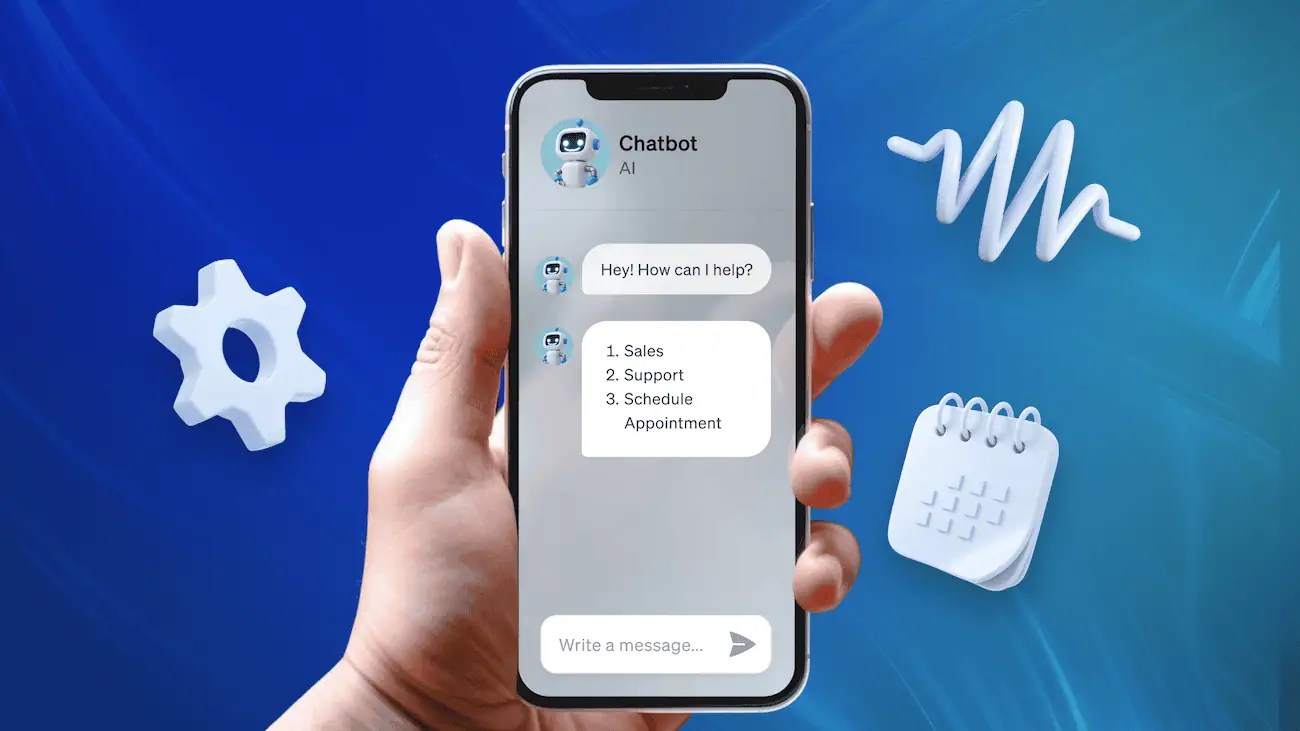You never know whether a call is an opportunity unless you pick it up or call back. Data from Superpath shows 85% of callers don’t call back if they don’t get an answer on the first attempt.
However, when call volumes scale up, getting to every call in time isn’t as feasible as it was when you started. In such situations, you can rely on technology such as an automated receptionist system, which is also known as an auto-attendant or virtual receptionist.
An automated receptionist prevents you from missing opportunities by ensuring someone always picks up and greets the caller, which is precisely as it should be. This also improves the customer’s experience.
What Is an Automated Receptionist?
An automated receptionist is a software-based phone system that answers and routes inbound calls without a human operator. Also known as an auto attendant or virtual receptionist, the automated receptionist system plays a custom greeting, offers menu options, and transfers each caller to the right team member or department.
An AI receptionist can be an included feature with many VoIP phone systems. It answers calls, confirms business hours, and asks for inputs (keypad presses or voice commands) to guide the call flow. This allows companies to project a consistent brand voice while being present for every opportunity that rings their phones.

Automated receptionist vs. human receptionist
Here are some pros and cons of an automated receptionist system compared with a human receptionist.
| Pros of Automated Receptionists | Cons of Automated Receptionists |
|---|---|
| They offer round-the-clock coverage and never miss a call. | They lack empathy. Some customers prefer talking to a real person. |
| The costs are much lower. It’s usually a monthly subscription or a pay-per-use model. | Traditional IVR can frustrate some customers when they have to help the system understand their business needs. |
| Every caller hears the same professional greeting, reducing errors. |
Technology is improving fast. Modern AI-powered receptionists use natural language processing to understand questions, reducing frustration. Companies can still offer a “Press 0 for a live agent” option or integrate live agents to cover sensitive situations. Over time, AI receptionists are learning to sound friendlier and more helpful, narrowing the empathy gap with human receptionists.
Types of Automated Receptionists
Below are some common types of automated receptionists:
- Basic auto-attendant: This is the simplest form of automated receptionist. When you call, a recorded menu plays, and your key inputs route the call. There are often one or two levels of menus, which can even include an automated company directory, allowing you to dial by name. Basic auto-attendants are easy to set up and great for small teams that need basic call routing.
- Interactive voice response (IVR) system: IVR is a more advanced auto-attendant that supports multi-level menus and can be speech-enabled. IVRs handle submenus and complex call flows, in which callers can navigate through layers. Many IVRs also offer time-of-day routing and directory lookup, and they often include features like voicemail boxes and call queues. Essentially, an IVR is a structured, many-layered auto-attendant.
- AI receptionists: The newest category uses AI receptionists to conversationally engage callers. Instead of pressing buttons, a caller can speak naturally, and the AI system uses natural language processing to interpret this intent and respond. Advanced AI receptionists can answer FAQs, book or reschedule appointments by syncing with a calendar, and even handle multilingual callers. If needed, they can escalate calls to a human agent.
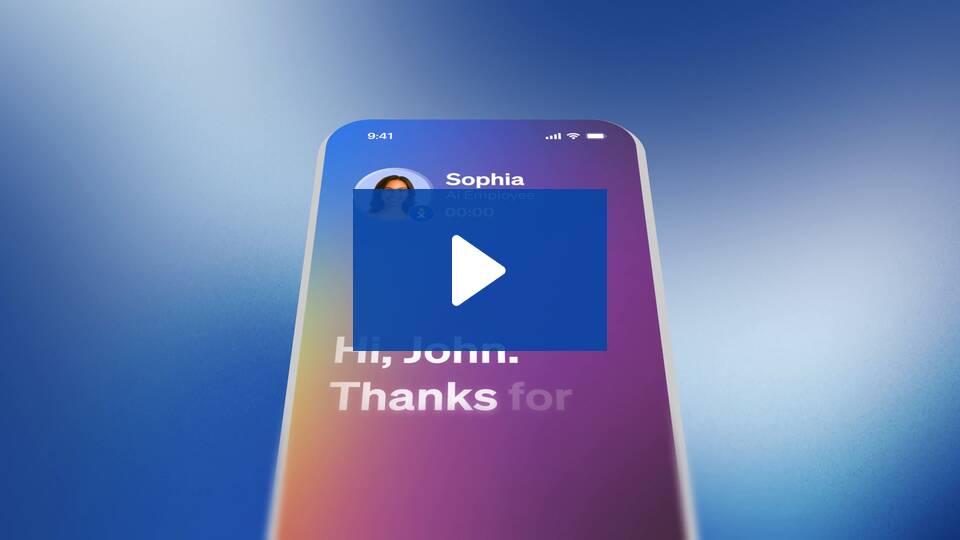
AI Receptionist Software – Answer Every Call 24/7 – Nextiva
Key Functions of Automated Receptionists
Check out the functions automated receptionists carry out.
Professional call answering
Automated receptionists answer incoming calls with a custom greeting every time. Businesses record or type a greeting that matches their brand tone, and when a call comes in, the system plays, “Thank you for calling [ZYX]. Please choose from the following options…”.
This ensures a consistent customer experience, as every caller hears the company’s name, purpose, and menu in the same professional voice. Callers instantly know they have reached the correct business phone number and hear key info. With a virtual receptionist, there’s never dead air or missed greetings; calls are always answered politely and routed properly.
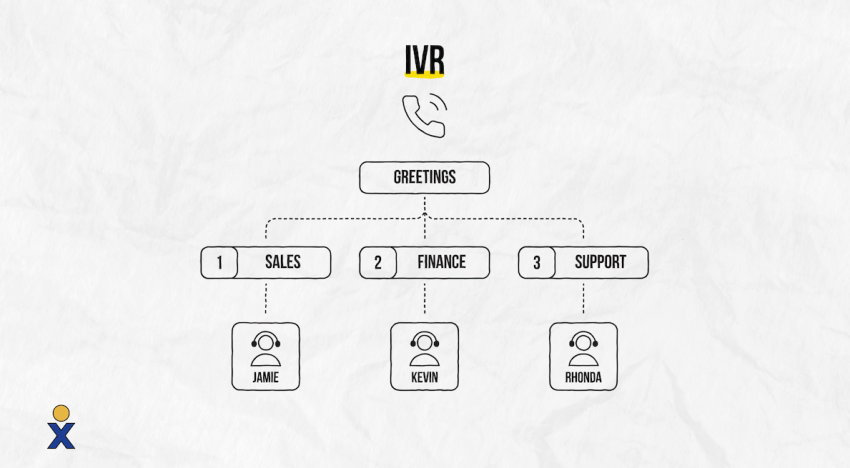
Call routing
Central to these automated systems is menu-based routing. After the greeting, the attendant prompts callers to pick an option from the menu. To choose, callers press digits or speak, and the system then transfers them to the correct extension, department, or external number.
Advanced auto-attendants allow submenus. Intelligent systems can even detect caller intent. For instance, speech recognition AI can route someone requesting an appointment directly to the scheduling team.
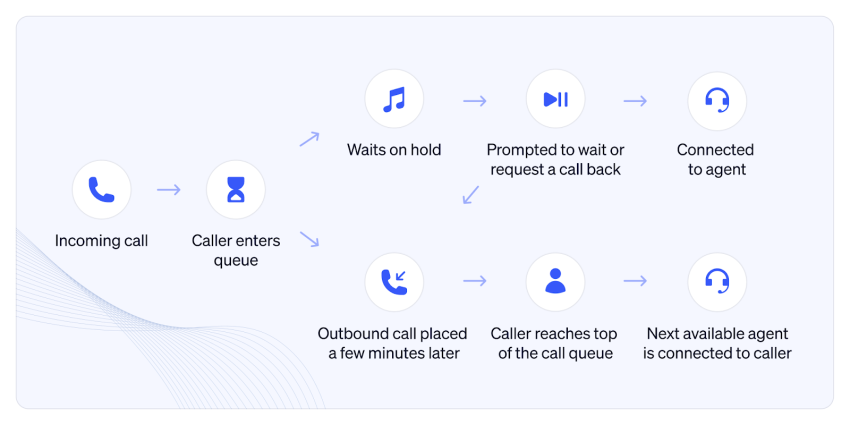
Information gathering
Automated systems collect information from callers. For instance, an IVR might prompt the caller to enter their account number or say their name. The system can record this info or verify it against a database.
For a recognized caller, CRM integration lets the system display that customer’s record and previous history to the agent. Your staff doesn’t have to ask “Who is this?” because the system already has a name or account details. Some auto-attendants can even take messages by giving the instruction “Please leave your name and inquiry after the beep.” Smart IVRs then transcribe those voicemails (into text) and email them to the right person.
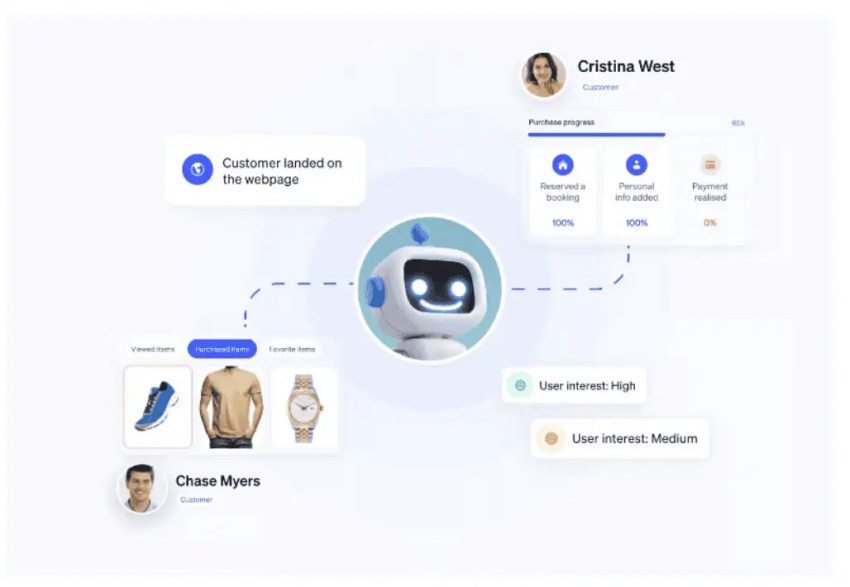
Appointment scheduling
AI receptionists sync with calendars. If a caller wants to book, cancel, or reschedule an appointment, the AI receptionist does it on the spot. For example, a caller could say, “Schedule me for next Tuesday,” and the system books that slot automatically.
Many tools also send confirmation texts or emails to the caller. This eliminates back-and-forth and gives callers 24/7 access to appointments. The integrations also ensure the auto-attendant knows staff availability.

Voicemail and messaging
When calls do go unanswered, the auto-attendant routes them to voicemail. Many systems often send those voicemails to email or even as text messages, and some cloud phone providers like Nextiva include voicemail transcription, in which speech is transcribed and included in the email. That way, a human receptionist or manager can read the message on their smartphone instantly.
Missed-call alerts are also common. The system sends SMS or app notifications so team members can call back quickly. This hybrid voicemail/call routing ensures every unanswered call is logged and acted upon, improving customer support and reducing lost leads.
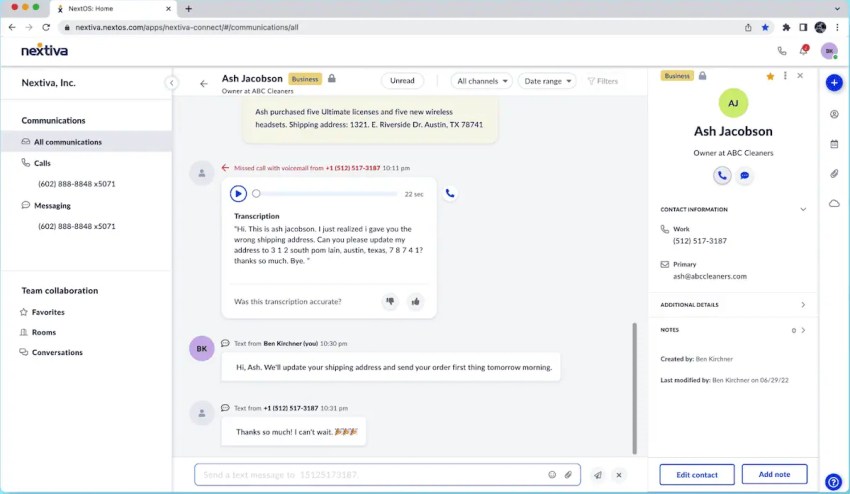
AI-powered interactions
The latest automated receptionist system use conversational AI. Instead of rigid menus, these systems can understand spoken language and context. They use natural language processing to answer FAQs and carry on dialogues.
This saves callers from having to navigate menus, as they can simply speak naturally and get immediate answers. If the question is complex, some systems consult a knowledge base or forward the call. In advanced setups, the AI receptionist can even detect if the caller is frustrated and then route them to a human agent.

ROI of Automated Receptionists
In terms of measuring the usefulness of an automated receptionist in ROI, there are some significant benefits.
Cost savings
The most obvious ROI is lower labor costs. A live receptionist’s salary, benefits, and training are significant expenses. An automated system, however, is paid monthly or per call and costs far less.
If we look at the average cost of 20 agents, including their salary, benefits, training, and turnover expenses, it comes to around $694,000 annually. That’s roughly $34,700 per agent/year. In comparison, Nextiva’s virtual receptionist/auto-attendant packages start at $15 per user per month in its Core plan, which has intelligent call routing and auto-attendant features. However, the greatest benefit is in the value you receive.
Efficiency gains
Automated receptionist system streamline workflows. Every call is automatically answered or redirected, reducing manual work. Staff no longer need to hunt for information or transfer calls themselves.
The system asks for a caller’s info, and then it quickly routes the call to the correct team member. This dramatically reduces wait times and dropped calls.
24/7 availability
The biggest plus is always-on service, as automated attendants never clock out. After business hours, calls aren’t lost or left on unanswered voicemail; instead, callers reach emergency contacts, leave messages, or have simple issues resolved. With this, businesses show customers that they’re always available to support and assist them.

Better customer experience
Callers experience faster answers and shorter queues without experiencing hold music or busy signals. An auto-attendant immediately acknowledges each caller, whereas a human receptionist can only handle one call at a time.
Consistent greetings reassure callers they have reached the right place, and when systems use AI, they can even solve problems without human help. With AI-enabled systems working 24/7, brands like Motel Rocks and Bank of America have seen customer satisfaction scores jump by 9% or more.
Scalability and growth
Automated receptionists grow with the business. When call volume spikes, the system handles it gracefully. Multiple callers can use it at once without hiring dozens of temps, as an automated receptionist scales without the need to increase headcount.
Top Use Cases for Automated Receptionists
Different businesses use automated receptionists differently.
Small businesses
For small businesses such as retail shops, salons, and law firms, hiring a full-time receptionist can be cost-prohibitive. Yet these businesses still need to appear professional.
An automated attendant lets these businesses answer calls 24/7 without needing extra staff. Any missed call can trigger an immediate callback workflow, which prevents lost leads.
Healthcare providers
Medical practices and clinics benefit greatly. Patients often call for appointments, prescription refills, or insurance questions. An automated receptionist can confirm office hours, book or cancel appointments, and triage urgent issues.
It can also collect patient details before connecting to a nurse or doctor, reducing administrative workload and phone tag. For example, after-hours patient calls can be assigned an appointment slot or routed to an urgent hotline, ensuring emergencies aren’t missed. Also, with HIPAA-compliant vendors like Nextiva, sensitive health info can be handled securely through integrated phone and messaging systems.


We are looking at doubling our business over the next couple of years. That’s a lot of people to talk to. We plan to leverage the IVR technology to prioritize where we spend our time and who we talk to.
— David Laiderman
Property management
Landlords and property managers juggle tenant calls all day. Automated attendants help them route maintenance requests, lease inquiries, and payment calls to the right team. The system logs service requests instantly and sends notifications, so tenants get quick replies (even outside business hours), significantly improving their satisfaction.
Professional services
Law firms, accounting firms, and consultancies often have multiple specialists. A virtual receptionist can efficiently connect clients to the right specialist. The system even allows dial-by-name for partners, so callers simply say or spell a lawyer’s name and are connected directly. This saves gatekeeper time and ensures referrals reach the correct expert.
Here’s a reflection of how an insurance company uses Nextiva’s auto-attendant capabilities in their business:

We use Nextiva to set up a phone tree so our customers can quickly access any department they need to. Whether it’s reporting claims, getting a new quote, or reaching out to one of their customer service associates, we’ve all got that built into Nextiva. They just click one button, and it directs them where they need to be.
— Lee Baker
After-hours and holidays
In any industry, automating after-hours calls improves service. Emergencies don’t last nine-to-five hours, so the automated receptionist can always give a fallback option. During holidays, custom greetings explain closures and then route critical calls appropriately. This ensures spam calls or robocalls can be screened, while legitimate calls get routed to duty staff.
High-call-volume enterprises
Large organizations or call centers with thousands of daily calls rely on automation. IVR menus and AI assistants filter and route the load. When call volumes spike, the system seamlessly activates additional menus and queue capacity.
There’s no need to hire dozens of temp agents, as the phone system just absorbs the extra calls. Many enterprises also use advanced features like skills-based routing and call queues that play on-hold messages. Automated receptionists handle these complex flows effectively.
Best Automated Receptionist Tools
Below are the best automated receptionist tools on the market.
1. Nextiva
Nextiva is a unified communications platform with built-in auto-attendant and AI receptionist features. The platform covers voice, SMS, chat, and even video in one app.

Key features of Nextiva include:
- Omnichannel support: Manage all business communication across voice, chat, and other channels from one unified interface.
- Multi-level IVR menus: Build complex submenus for efficient self-service call routing.
- AI-powered speech recognition: Understand natural speech for smoother, more human call routing.
- CRM integration: Personalize greetings like “Hello, John!” using real-time caller ID lookups.
- High reliability: Get 99.999% uptime, which allows for the handling of over a billion calls annually, ensuring constant availability.
- Custom greetings: Record multiple messages tailored to business hours, locations, or caller types.
- Priority routing: Prioritize specific caller IDs automatically for faster response times.
- Voicemail transcription: Convert voicemails into text and send them directly to your email.
- Call analytics: Get insights into call volume, wait times, and performance trends.
The automated attendant feature has a high positive user rating. Reviewer feedback highlights Nextiva’s reliability for call-fielding and managing professional reception workflows when staff are busy. In a CrazyEgg review of answering services, Nextiva is described as “Best for most small businesses” because it allows small teams to configure menus and after-hours routing:

Best for: Businesses of all sizes that want a single, scalable platform for all communications. Nextiva is highly cost-effective for teams needing a professional phone presence, advanced AI, and omnichannel routing.
Never miss a call with an auto attendant.
Route calls to your team with intuitive menu options to reach sales, service, or support when customers call.
2. RingCentral
RingCentral offers auto-attendant features as part of its full business phone system, and it supports flexible IVR menus and call flows. The RingEX AI-enabled platform goes beyond basic IVR and supports multiple channels.

It provides robust enterprise-grade features, including international numbers, advanced analytics, and broad third-party integrations. However, its feature depth may be more than some teams need, and it can be more expensive.
For the auto-attendant feature on RingEX, many users cite reliable call routing. However, a recurring theme in feedback is that the configuration for advanced routing or after-hours flows can be less intuitive and may require support assistance.
Ideal for: Mid-size to large businesses that already use RingCentral or need sophisticated contact center functionality. Be prepared for some initial admin setup.
3. Vonage Virtual Receptionist
Vonage’s Virtual Receptionist service is an IVR auto-attendant that can be configured relatively quickly. It provides a straightforward menu system with text-to-speech or recorded greetings, and it also features flexible scheduling.

Vonage supports features like dial-by-name and holiday routing, and it also offers human answering plans as a live backup. User feedback suggests that while the automated receptionist feature itself is solid, the surrounding setup, mobile app environment, and customization of advanced IVR flows can require extra effort.

Ideal for: Small businesses needing a basic menu-driven phone system with minimal fuss.
4. Grasshopper
Grasshopper is a lightweight virtual phone system targeting solo entrepreneurs and very small teams. It provides a basic auto-attendant with custom greetings and phone menus (e.g., “Press 1 for sales”).

Grasshopper is known for its simplicity and includes features like voicemail transcription, simultaneous call handling, and business SMS. Its automated attendant feature, in particular, garners a lot of positive reviews. User feedback also shows the platform is simple to use, but it lacks advanced IVR features.
Ideal for: Solopreneurs or tiny teams (two to 10 people) who want a more professional presence and prioritize simplicity.
5. Goodcall
Goodcall offers a hybrid approach with AI-powered virtual receptionists plus optional live agents. You can have an AI receptionist answer calls and then escalate them to a human answering service if needed.

Goodcall provides an interface for tuning agent capabilities, behavior, and workflows. Recent review data is limited, but a common theme in Goodcall feedback is concern over the pricing structure.

Ideal for: Small businesses or service professionals who want a blend of automation and live support and expect modest call volumes.
Nextiva: Receive More Inbound Calls, Without All the Costs
Automated receptionists ensure businesses never miss important calls while slashing overheads. They answer calls with friendly, on-brand greetings, route callers via menus or AI, and even gather information or schedule appointments.
Among the many options available, Nextiva stands out as the most complete, reliable solution. Many customers trust it across the various use cases covered above. If you’re looking for an all-in-one solution that scales with your team (and doesn’t cost much to get started), Nextiva is a good choice.
Explore Nextiva’s auto-attendant. Give your customers the experience they deserve.
Never miss a call with an auto attendant.
Route calls to your team with intuitive menu options to reach sales, service, or support when customers call.

















 Customer Experience
Customer Experience 

